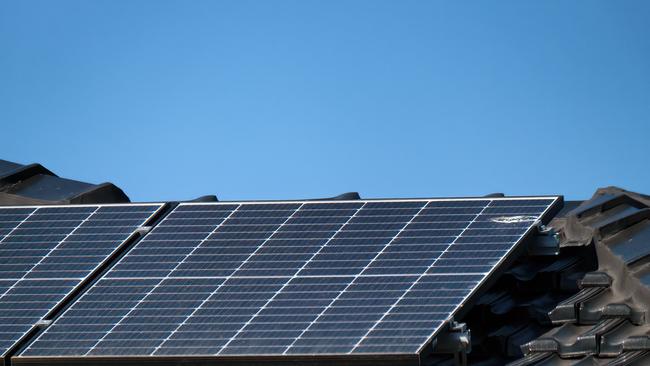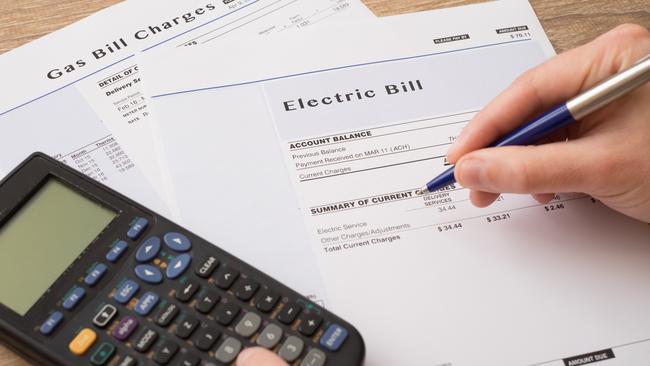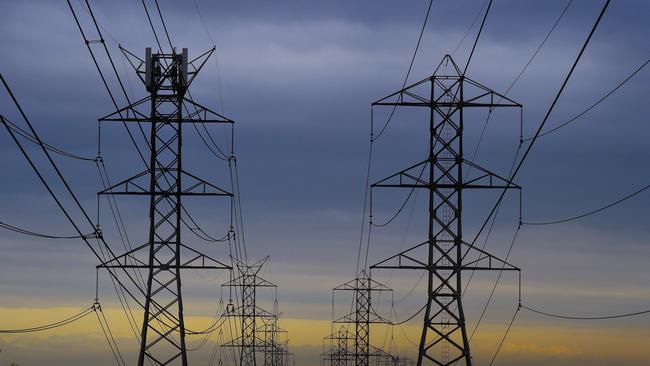‘Madness to charge people for sunlight’: Sneaky ‘Sun tax’ slugged on solar households slammed as ‘rip-off’ amid cost of living crisis
Thousands of Aussies trying to keep their bills down are being stung with a hidden tax advocates are calling “madness” as the cost of living continues to bite.
Companies
Don't miss out on the headlines from Companies. Followed categories will be added to My News.
A hidden “Sun tax” slugging Aussies who have made the switch to solar has been slammed by energy advocates as “madness” and a “rip-off”, accusing energy companies of “wanting to charge people” making energy from sunlight.
Distributors in some Australian states have moved in the sneaky tariff, known colloquially as a Sun or solar tax, as households begin to embrace the shift to renewables in the hopes of power bill relief.
But the new measures will result in those households being slugged for sending the solar energy they generate back to the electricity grid during peak times – something providers hope will encourage households to store their self-generated power and use it, rather than hoping for a credit if it is exported back to the grid.
Renewable energy advocate Heidi Lee Douglas has been highly critical of the plan, saying it was “not a bright idea” to penalise people for “taking control of their power bills with cheaper, cleaner solar” during a cost of living crisis.


“Energy companies want to charge people with solar panels to make energy from sunlight, and that’s simply not fair,” Ms Douglas, the chief executive of renewable advocacy organisation Solar Citizens, said.
“The new two-way tariff is a blunt instrument that charges people with solar panels for feeding their energy into the grid during the day, rather than supporting them to store their energy or feed it back into the grid at another time.
“Rather than stick people with penalties for not having batteries they can’t afford in a cost of living crisis, households need more support to access the benefits of battery storage.
“People in NSW were absolutely furious, and Queenslanders will be livid when they find out more about the big tariff rip-off planned for households with solar panels.”
A Sun tax refers to a new export tariff for customers using solar, part of a two-way pricing structure where users are effectively penalised for exporting solar-generated energy when the network is overloaded – such as in the middle of the day.
According to Canstar, the tariff also rewards people who export the energy produced by their solar panels back to the electricity grid during times of high demand.
Energy providers mostly pay households for electricity fed back into the grid in the form of rates called solar feed-in tariffs (FiTs).

Canstar states the tax is designed to prevent gridlock on electricity networks, encouraging households to use their own solar energy first, rather than sending it back to the grid.
Ms Douglas said one of the biggest impact of the Sun tax was the message it sent to households thinking about installing solar.
She explained it would discourage them from doing so, saying: “It’s madness to charge people for sunlight.”
“What we really need to do in a cost of living crisis is accelerate the rate of rooftop solar installations by providing access to solar for those who have so far missed out – like renters, social housing, and apartments,” Ms Douglas said.
While the tariffs came into place in mid-2022, most households and businesses won’t see any major change until next year.
This is due to distributors needing to submit a price proposal to the Australian Energy Regulator (AER) to demonstrate why they need it.
Some distributors in NSW and the ACT have already outlined the changes and how the costs would look for the average household or small business.
Ausgrid, the largest energy provider on Australia’s east coast, revealed they were imposing such a two-way tariff in July – charging customers 1.2c/kWh for the electricity they produce during the peak export period of 10am-3pm.

The company said customers would receive a payment of 2.3c/kWh for electricity exported to the grid during peak demand hours between 4pm-9pm each day.
In a statement, Ausgrid said they wanted to encourage customers to use their self-generated electricity while providing a “safe, reliable supply” to everyone.
Solar batteries are widely viewed as a way to store the unused energy generated from solar panels – so it can be used at another time.
But the measure is costly, setting households back anywhere from $8750 to more than $20,000 depending on the scale of the battery and the provider.
The NSW State Government has said it will introduce a rebate starting at $1600 for battery storage systems from November 1.
Queenslanders will not be slugged with a Sun tax until 2025 but the state government rolled out a rebate on home solar battery systems allowing people to offset the cost of purchase and installation.
However, it closed in May.
“The Queensland government must find ways of getting more households powered by solar and create the incentives to shift people into having solar and batteries,” Ms Douglas said.

“About 60 per cent of the community is currently locked out of the benefits of solar, including renters and people living in apartments or social housing, and they have among the most to gain from reduced energy bills.
It comes as data from the clean energy regulator reveals many of Sydney’s outer suburbs are embracing solar and battery storage.
In Marsden Park, in Sydney’s west, households are 87 per cent more likely to have these systems in place, followed by Tumbulgum and Tweed Heads at an uptake rate of 71 per cent.
But in more established suburbs across the state, those rates were far lower.
Only 2.9 per cent of dwellings in Elizabeth Bay, Potts Point, Rushcutters Bay and Woolloomooloo had solar energy and battery storage in place.
In Ultimo, only 4.8 per cent of households had embraced the new technology while Darlinghurst and Surry Hills had 5.3 per cent of dwellings taking up solar.
David Sedighi, chief operating officer of power solutions provider VoltX Energy, said these figures could be put down to government mandates for new home constructions.
“Energy savings aside, solar has made these new homes more energy efficient, enabling people to meet compliance for a Building Sustainability Index (BASIX) certificate,” he said.
“We know having solar makes a new home more attractive to prospective buyers in the future too, as the cost of energy increases.
“The so-called Sun-tax where energy providers charge customers a tariff for rooftop solar exported to its network will also drive demand for batteries.”
Originally published as ‘Madness to charge people for sunlight’: Sneaky ‘Sun tax’ slugged on solar households slammed as ‘rip-off’ amid cost of living crisis



